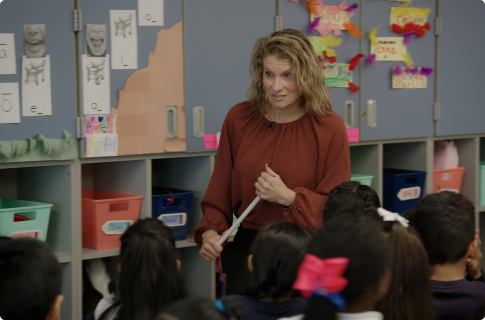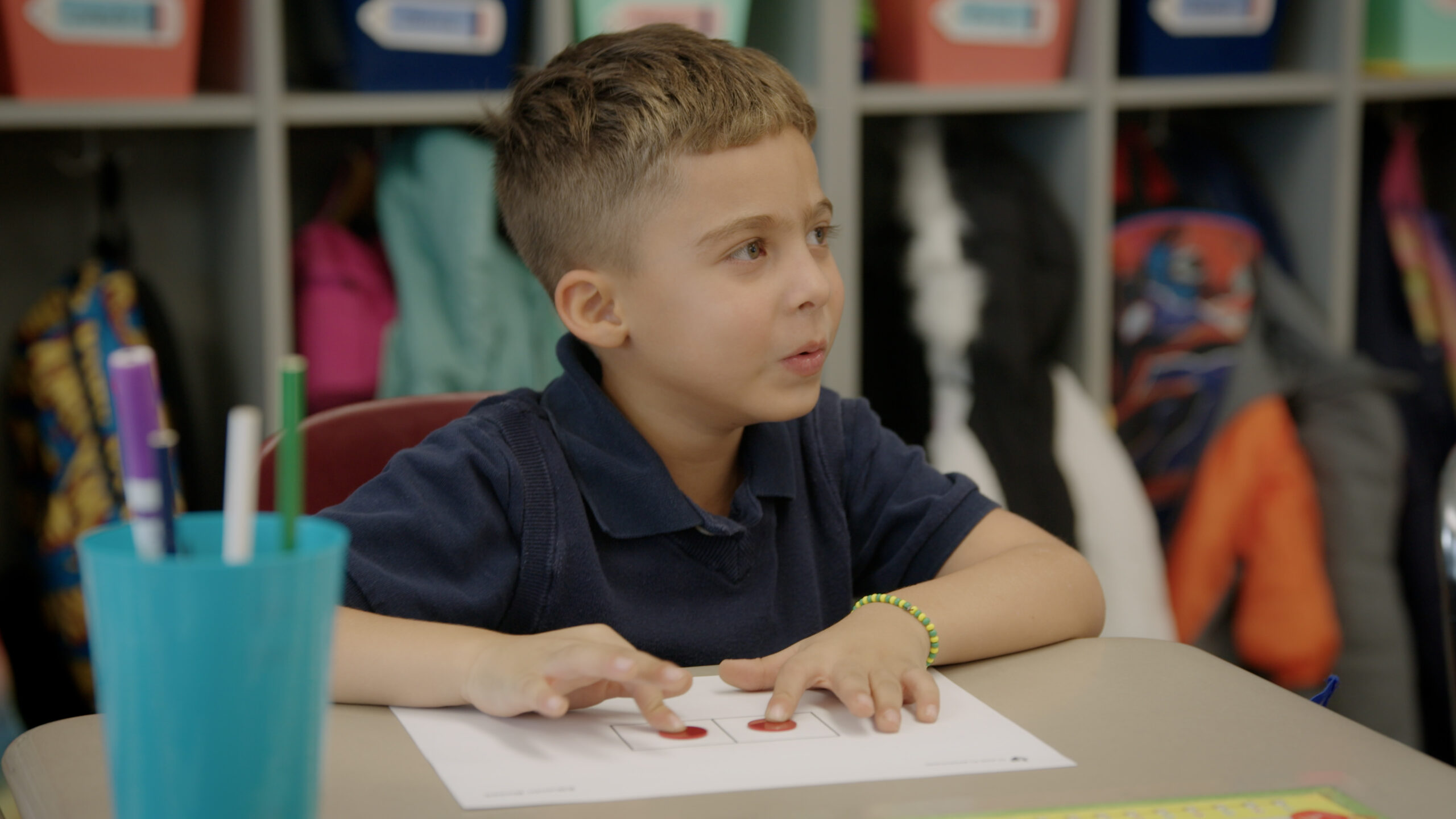Introducing an Explicit Phonics Lesson
Overview
In Part 1 of the explicit phonics instructional components, the teacher states the goal and purpose and reviews familiar phonemes and graphemes preparing students for the next new sound-symbol relationship. During this review time, the teacher assesses student understanding as they engage in a familiar routine of listening, speaking, and using gestures while they recite each sound.
Key Take-aways
• State the goal and purpose in student-friendly language and be sure students understand the success criteria.
• Using a variety of phonological awareness activities creates a brisk, energetic routine that students look forward to.
• Reviewing phonics patterns, sounds, or concepts and connecting them to what’s next allows us to be systematic in our instruction and students can make connections and store new content in an organized way.
Transcript
Dr. Ken Kunz: By clearly stating the goal and purpose. The teacher not only establishes a roadmap for the lesson but also ensures that students understand the overarching objective. This is crucial for fostering a foundational understanding of phonics. It also sets the tone for a focused and purposeful learning experience, providing students with a clear direction and instilling confidence in their ability to grasp the phonetic elements at hand.
Teacher: Today, we are going to practice blending some words from our story. What was our story?
Student(s): The Sandwich Swap. Okay. We’re going to listen for sounds, that I’m going to ask you to blend together. So I’m going to give you some clues and some mystery sounds.
Teacher: I can sort…
Student(s): I can sort…
Teacher: words by listening
Student(s): words by listening
Teacher: to the first sound I hear.
Student(s): to the first sound I hear.
Teacher: Very good. I can pronounce…
Student(s): I can pronounce…
Teacher: words with my partner…
Student(s): words with my partner…
Teacher: We’re going to use our sound cards and then we’re going to do a little game afterwards with our, our sounds. Okay. You ready? Everybody should be facing me.
Teacher: Let’s take a look. F /f/ flying fish.
Student(s): F /f/ flying fish.
Teacher: T /t/ tick, tick, tock.
Student(s): T /t/ tick tick, tock.
Teacher: P /p/ patting pizza
Student(s): P /p/ patting pizza.
Teacher: Let me see you patting the pizza. Good. M /m/ humming monkey.
Student(s): M /m/ humming monkey.
Teacher: L /l/ licking lollipop.
Student(s): L /l/ licking lollipop.
Teacher: X /x/ fix the mixer.
Student(s): X /x/ fix the mixer.
Teacher: Z /z/ zipping zipper.
Student(s): Z /z/ zipping zipper.
Teacher: All right. We ready to move on? Yes. Okay. We’re going to move on to our vowels. You ready? Okay. O /o/, on the chair.
Student(s): O /o/ on the chair.
Teacher: Good job. U /u/ under the chair.
Student(s): U /u/ under the chair.
Teacher: Good. I /i/ in the chair.
Student(s): I /i/ in the chair.
Teacher: Good. E /e/ edge of the chair.
Student(s): E /e/ edge of the chair.
Teacher: Very, very good. A /a/ at the chair.
Student(s): A /a/ at the chair.
Teacher: Excellent.


